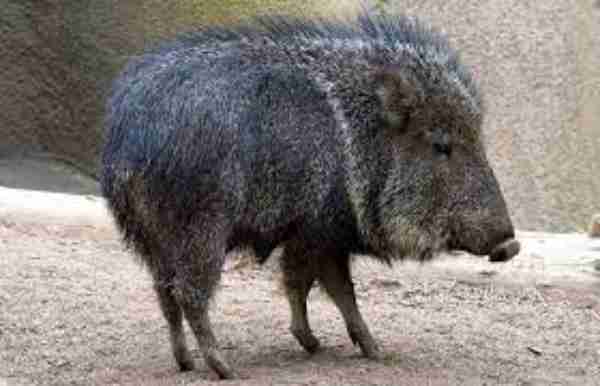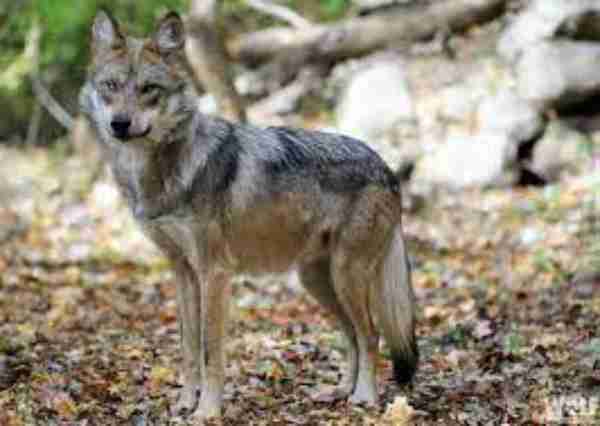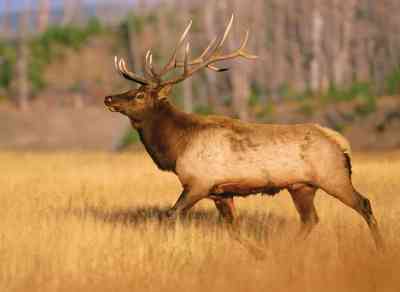New Mexico offers a diverse range of landscapes, including deserts, mountains, forests, and rivers. The state is home to a rich variety of wildlife, with a total of 110 reptile species, 542 bird species, 100 mammal species, and 27 amphibian species.
Table of Contents
Among the most commonly encountered wild animals in New Mexico are desert cottontails, various bird species, bighorn sheep, rattlesnakes, elk, and black bears.
The official animal of New Mexico is the black bear, which was designated as such in 1963. Although they are commonly referred to as black bears, their fur can actually range in colour from black to reddish or brownish.

These black bears are considered a protected species and can be found inhabiting forested areas near the mountains. The desert regions of New Mexico are particularly intriguing for wildlife enthusiasts. These deserts are home to various resilient creatures, including mule deer, coyotes, peccaries, mountain lions, and rattlesnakes.
These animals, among many others, have adapted to survive the extreme temperatures of the desert, enduring scorching heat during the day and freezing cold at night. Exploring the numerous rivers in New Mexico provides ample opportunities to observe fascinating wildlife. Falcons, snapping turtles, elk, grouse, beavers, and belted kingfishers are some of the creatures that can be found in close proximity to New Mexico’s waterways.
Elk

The term “elk” originates from an ancient Germanic root word that means “stag” or “hart.” In Europe, the term “elk” is used to refer to moose. However, in sixteenth-century Virginia, English settlers used the term to describe the local subspecies of red deer.
This name became popular in New England as well. Another term, “wapiti,” refers to the light-coloured coat of male elk. Although less commonly used than “elk,” “wapiti” never gained widespread popularity, and in North America, “elk” remains the established proper name.
In Asia, elk, along with the red deer of Persia, are called “maral” in Mongolian. Among all deer species, elk are surpassed in size only by moose. Large male elk from Alberta, Canada, weighed an average of 380 kg (840 pounds) in late fall. Weight varies significantly within and among populations, increasing from south to north.
Mature bulls can exceed 500 kilograms (1,100 pounds) in weight, while bulls from southern California average around 110 kilograms (240 pounds). Female elk resemble bulls in appearance and weight more than other red deer species. During winter, all elk develop dark neck manes that contrast with their tan or light brown body color.
Elk share similar biological characteristics with other red deer. However, they are more highly adapted to life in open fields and cold, long winters. They have evolved as fast and enduring runners, making them challenging to catch even for the fastest horses, especially in rugged terrains.
Nonetheless, their primary defense against predators is by forming large groups. American elk have consistent coat markings and vocalizations, making it difficult to distinguish them from some of their Asian counterparts based on these features.
They differ from other subspecies of Asian elk, such as the Manchurian red deer and the smaller Alashan wapiti of Inner Mongolia. These primitive elk have smaller bodies and antlers, less striking coat patterns, and a deeper voice than North American elk. However, both male American and Asian elk produce a bugling call during the rutting season. This call is a vocal adaptation that enables them to communicate over long distances in open landscapes. Occasionally, females also emit vocalizations.
In New Mexico, elk can be found in parklands, deciduous forests, and rocky mountains, coexisting with other animals.
Burrowing Owl

Burrowing owls inhabit abandoned burrows created by other animals. Their diet consists of insects and small rodents. These owls are slender and have long legs, measuring approximately 20 cm (8 inches) in length. They have brown plumage with small white spots, a white face and forehead, and yellow eyes. During the daytime, burrowing owls may stay near their burrows or perch on a post.
They engage in hunting activities near dawn and dusk, capturing prey by chasing it on the ground or swooping down from nearby perches. Burrowing owls face a wide range of predators, including hawks, falcons, other aerial predators, wild and domesticated dogs and cats, weasels, and badgers.
When approached by humans, they bob up and down, possibly as a way to assess their distance from the approaching individuals, and then fly away. Burrowing owls feed on insects, small mammals, amphibians, reptiles, and other birds, depending on the season and food availability.
They are primarily active during sunrise and sunset, although some owls may hunt throughout the day. Insects are commonly found during the daytime, while more mammals are consumed at night. The burrowing owl is a ground-dwelling bird species characterized by its long legs, brown body with white speckles, and the absence of ear tufts. Both males and females are approximately 10 inches tall and weigh around six ounces. The wingspan of a burrowing owl ranges from 20 to 24 inches.
To find burrowing owls in New Mexico, look for them in dry, open areas with less vegetation. These areas should have suitable burrows, perches for horizontal visibility, and an adequate food supply.
Peccaries

Resembling wild pigs, peccaries possess coarse black hair and a large head with a circular snout. Their ears and tails are small, with the tail often being hardly noticeable. The peccary’s distinctive canine teeth, resembling spears, are responsible for its alternative names, “lance” and “javelina.” While these teeth do not protrude, they create prominent bulges in the lips.
Peccaries are the New World counterparts of pigs but differ from true pigs in certain skeletal and dental characteristics. They also possess a scent gland beneath the skin, located on the edge of the back, which emits a strong musky odour. This gland has led to the mistaken belief that peccaries have two navels, one above and one below. Peccaries are omnivorous, feeding on various plants, small animals, and carrion.
When alarmed, peccaries emit a barking alert call and produce a rattling sound by grinding their teeth when agitated. Although they can be fierce when provoked, they are sometimes tamed by South American Indigenous peoples. Peccaries are also hunted for their hides and meat. Typically, litters consist of two young offspring, born after a five-month gestation period. There are three species of peccaries. The collared peccary is the smallest and most widespread, inhabiting various habitats throughout the range of tayassuids.
Distinguished by a pale stripe around the neck, collared peccaries measure less than a meter in length and weigh between 17 and 30 kg. They inhabit a variety of environments, often foraging in groups of around twelve during the daytime, although larger and smaller groups are also common.
Mexican Wolf

Equipped with keen senses, powerful jaws, and an impressive hunting speed of 60 km per hour, the grey wolf is well-adapted to its carnivorous lifestyle. A typical adult male in northern regions, including its bushy half-meter-long tail, can reach a length of around 2 meters.
Standing at the shoulder with a height of 76 cm, it weighs approximately 45 kg, although weight can vary from 14 to 65 kilograms depending on the geographic location. Females are generally about 20% smaller than males. The larger wolf subspecies inhabit west-central Canada, Alaska, and northern Asia, with the smallest individuals usually found at the southern end of their range.
The fur on the upper body of grey wolves is typically black, but it can also range in colour from brown, reddish, dark, to whitish. The underparts and legs are mostly yellow-white. In Arctic regions, it is common to find light-colored wolves. Grey wolves typically live in packs consisting of up to two dozen individuals, with pack sizes typically ranging from 6 to 10. A pack is a family unit that includes an adult breeding pair, comprising the dominant male and alpha female, along with their offspring of varying ages.
The ability of wolves to form strong social bonds with one another enables the functioning of a wolf pack. Within the pack, a hierarchical structure is established, governing all aspects of their lives. The dominant male and alpha female assert themselves over subordinates and guide the activities of the group. The female takes on roles such as caring for and protecting the pups, while the male is involved in scavenging, providing food, and participating in activities associated with hunting. Both genders actively participate in pursuing and capturing prey, although solo hunts are more common during the summer.
A wolf pack’s territory can range from 80 to 3,000 square km (31 to 1,200 square miles), depending on prey availability, and it is vigorously defended against neighboring packs. Wolves communicate with each other through visual signals (gazes, body postures, tail positions), vocalizations, and scent marking.
Howling helps the pack maintain communication and appears to strengthen social bonds among its members. Along with howling, marking an area with urine and feces serves as a signal to neighboring packs to respect territorial boundaries. Resident packs often kill intruders, but in certain circumstances, they may be accepted.
To find Mexican wolves in New Mexico, look for them in mountainous woodland habitats.
Barbary Sheep

The aoudad, also known as the Barbary sheep, stands approximately 102 cm tall at the shoulder. It features a fringe of long, soft hair hanging from its throat and forequarters, as well as distinctive crescent-shaped horns that curve outward, backwards, and inward over the neck. The male aoudad exhibits more pronounced fringes and horns.
These animals inhabit dry, hilly, or rocky regions and live in small family groups. They can survive without water for about five days. When threatened, the aoudad remains motionless and blends with its surroundings due to its brownish-brown coat, which camouflages it against the surrounding rocks.
In its native range, the aoudad is considered vulnerable to extinction, with only scattered, small populations surviving. It is likely extinct in Egypt. However, after being introduced for hunting purposes, the aoudad has established thriving populations in the southwestern United States and northern Mexico.
In these areas, it outcompetes native ungulates such as desert bighorn sheep. Barbary sheep pose a threat to donkey deer and bighorn sheep, as they compete for food and territory resources.
Donkey deer and Barbary sheep have similar diets, and the aggressive invasive Barbary sheep can outcompete and displace the more vulnerable donkey deer. Efforts to reintroduce large populations of bighorn sheep are at risk due to territorial competition. Barbary sheep are known to be proactive and territorial, skilled at climbing and evading hunters.
They also live in packs consisting of experienced and young individuals, which gives them a size advantage over native bighorn sheep. Barbary sheep pose a threat to wheat farmers, as they have been observed feeding on winter wheat crops.
Although not currently considered significant agricultural pests, Barbary sheep have a moderately long breeding season, with the highest breeding activity occurring from September to November. Gestation lasts approximately 160 days, with the majority of births taking place from February to April, although some occur as late as November. Females reach physical maturity at eight months of age, and by 19 months, all females will have given birth to offspring.
Cassin’s Finch

Resembling a slightly broader and longer-billed version of the Purple Finch, Cassin’s Finch is a resident bird found in the mountains and coniferous forests of the western region. It can occasionally be spotted at high altitudes in the sparse woods just below the treeline, especially in early autumn.
Other times, small wandering flocks move through the forest, often feeding on buds and seeds high up in the trees. The complex song of the male often includes brief imitations of other bird species, with an average clutch size of 4-5 eggs, sometimes ranging from 3 to 6.
The eggs are pale blue-green with brown and dark spots, usually more concentrated at the larger ends. The incubation period is carried out by the females alone and lasts for approximately 12-14 days. The male often assists in feeding the female during this period. Both parents contribute to feeding the young chicks, and they leave the nest around two weeks after hatching. The parents and juveniles may then temporarily leave the nesting area, primarily foraging on seeds, buds, and berries.
Cassin’s Finches primarily feed on plant material, with buds from various trees being a staple in their diet. They also consume seeds of many tree species, especially conifers, as well as some weed seeds. When available, they take advantage of berries and small fruits. Additionally, they consume some insects, particularly during the summer months. The breeding population in an area can fluctuate over time, likely in response to changes in food availability.
These finches may nest in small colonies, although the male does not defend a specific territory but rather stays close to the female and fends off rival males. Their nests are typically placed in large conifer trees, usually around 30-40 feet above the ground, but they can be as low as 10 feet or as high as 80 feet.
Occasionally, they may also nest in aspen or other deciduous trees. The nest, likely constructed by the female, is an open cup made of twigs, weeds, rootlets, and pieces of bark, lined with fine grass, plant fibers, and animal hair, sometimes adorned with lichens.
To find Cassin’s Finches in New Mexico, look for them in evergreen forests within the mountainous regions, where they coexist with other animals.
FAQs for
What animals in New Mexico is common?
New Mexico is home to a diverse array of animals, but one species, in particular, stands out as a common sight in the state: the pronghorn antelope.
What wildlife are animals in New Mexico?
From the majestic elk to the scurrying pronghorn, the diverse wildlife of the state never fails to amaze both visitors and locals alike. Other animals that can be commonly found in the state include the black bear, bobcat, coyote, and bighorn sheep. Birdwatchers can also enjoy spotting various species of birds such as the roadrunner, crow, and even eagles.
What are 12 animals native to New Mexico?
Some of the most fascinating native species include the black-tailed jackrabbit, which is known for its impressive speed and agility, and the desert bighorn sheep, which has adapted to the extreme heat of the desert by developing a specialized organ that allows it to conserve water. Other animals commonly found in New Mexico include the pronghorn, the kit fox, and the elusive mountain lion.
Final Words
New Mexico is home to a diverse range of wildlife, but perhaps the most iconic is the black bear. Despite its name, these bears don’t necessarily have to have black fur – their outer hair or skin can be reddish or brownish instead.
It’s no wonder why the state chose the black bear as its official animal in 1963. Visitors to New Mexico may also have the chance to spot other fascinating creatures, from the speedy desert cottontail to majestic bighorn sheep.
Birds and rattlesnakes are also common sights in the state’s varied landscapes. Whether you’re an avid wildlife enthusiast or just appreciate the beauty of nature, New Mexico is a must-visit destination for its incredible array of native species.
Reference:
- https://online.nmartmuseum.org/nmhistory/geography-and-environment/resources/plants-animals/historytext-plants-animals.html
- https://www.wildlife.state.nm.us/hunting/information-by-animal/
- https://animalia.bio/new-mexico-region

Zahra Makda
Growing up enjoying the beauty of my village, a good passion for nature developed in me from childhood. Following my passion for the natural world, I have chosen zoology for my graduation, during my undergraduate degree, I participated in many nature trails, bird watching, rescues, training for wildlife conservation, workshop, and seminars on biodiversity. I have a keen interest in invertebrate biology, herpetology, and ornithology. Primary interests include studies on taxonomy, ecology, habitat and behavior.









